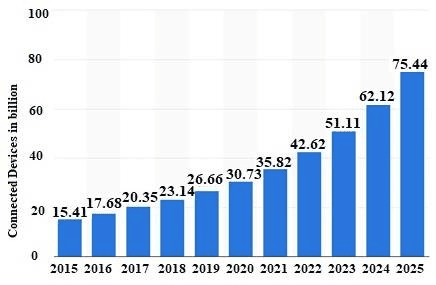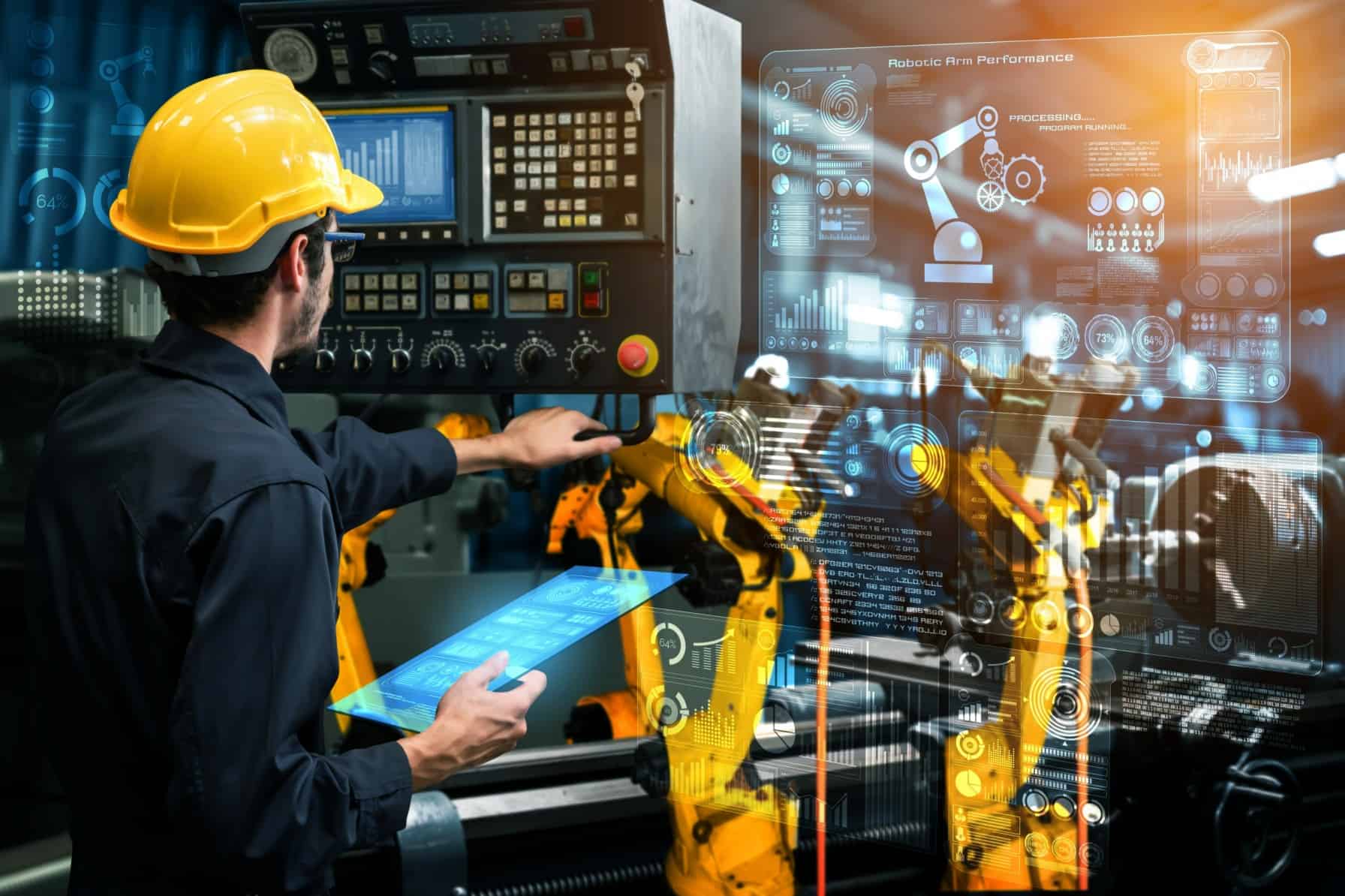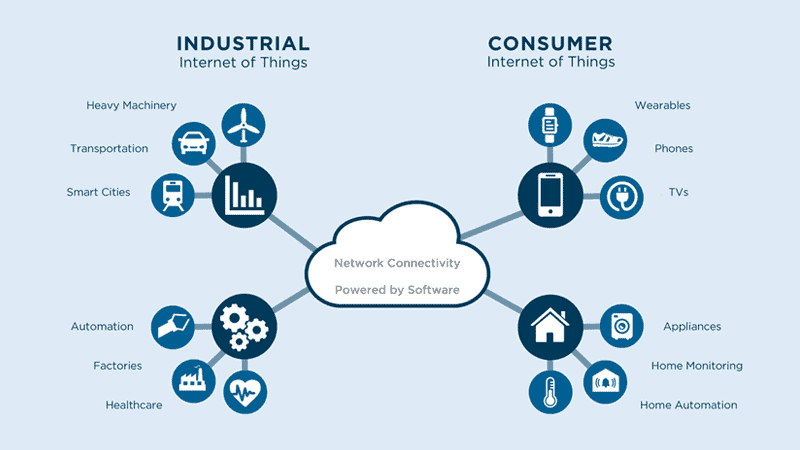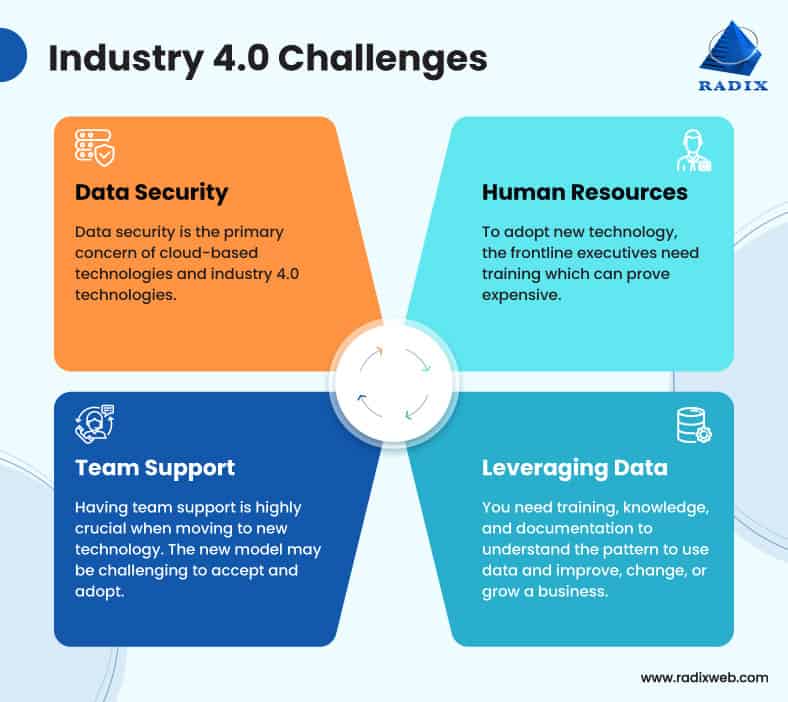Main principles of the industry 4.0
As mentioned in previous articles – also centred on the Polish Industrie 4.0, Industry 4.0 is based on the inter-connectivity of an enterprise’s machines thanks to digitalisation. This concept relies on four principles: agility, data analysis, automation and interconnexion.
Agility
The connectivity of the means of production of an enterprise ensures live feedback and monitoring, which allows great flexibility and agility and rapid decision making appropriate to the various situations.
Data analysis
Thanks to the large quantity of data that can be collected from various parts of the chain of value, this data can be processed, in order to find correlations and possibly build models in order to improve future behaviours and make them more adapted and more automatised.
Automation
The use of machines in order to achieve the automation of physical processes allows to save time and use of energy. It replaces repetitive labour and its predictability and the possibility to integrate it to the interconnected chain of production makes it an essential element of the industry 4.0.
Interconnexion
The interconnection of a company’s machines bases itself on digitalisation of their data in order to have a consistent overview of the production process as a whole and to be able to know accurately how the production is being carried out, at every point of the chain.
The opportunities of the 4th industrial revolution for consumers and producers
Consumers
Thanks to the highly increased personalisation enabled by the industry 4.0, it is possible for manufacturers to create highly customised products that are considerably less expensive and which truly correspond to each customer’s individual needs. With a fully converted Industry, consumers are able to communicate directly with the machines during the creation of the product he has ordered, through sensors, this process is called “Smart Product” (Convercon, 2021). The automation provided by this revolution also results in dramatically reduced costs of products for consumers.
Producers
Despite the very low manufacturing volumes resulting from the Smart Product process, factories can maintain profits due to low costs and automatised production (Convercon, 2021). Companies can produce goods that are more personalised while not increasing the costs. This leads to an increase of their competitiveness on the market, thanks to the added value it generates. Moreover, it increases the engagement of consumers in the products they order, as they feel like the “designers” of their production, which results in customer loyalty over time. Furthermore, the automation of processes results in quick execution and thus more productivity, while allowing for more appropriate and less wasteful planning. Companies can benefit from an improved reputation as innovative businesses, which can give them more visibility on the market, and their modern equipment allow them to adapt to changes on the market very quickly and always stay competitive.
Challenges on the macroeconomic scale
Labour substitution and job losses
The transformation brought about by the transition to Industry 4.0 is not limited to its micro-economic impacts, even if it is primarily observed at the level of each company. The transition to Industry 4.0 is also a major macroeconomic issue, which is now facing all the major industrial countries which have at least partly started the modernization of their industry.
All three previous Industrial Revolutions have had a significant impact on countries’ economies. As a side effect of increasing their efficiency and allowing for economic growth and higher GDP, those revolutions have impacted the structure of industries and thus their workers, whose roles have evolved considerably over the last centuries. Even going back to the first industrial revolution, the extreme changes in production resulting from mechanisation and steam power caused many tasks or jobs previously executed by labour to be replaced by machines.
Over the years, new processes brought about by the next industrial revolutions such as mass production, electricity and computers have continued reshaping and questioning the labour’s place and role in the Industries. The fourth revolution is believed to cause possibly even more changes in the long run when it comes to the restructuring of job markets. Indeed, this revolution goes farther than the previous ones in terms of disruption, as the now entirely automated processes will cause entire categories of jobs to become obsolete. Erik Brynjolfsson and Andrew McAfee pointed out that this will likely cause in an increase in inequalities, as the substitution of workers by machines can be expected to increase the gap between the return to capital (for the investor) and the return to labour (in other words, the salary, Schwab, 2016). However, on the other hand, Brynjolfsson and McAfee argue that this increase in equality could also come with more rewarding and safer jobs (Schwab, 2016).
For now, it is thus too early to predict the actual consequences the fourth industrial revolution will have on the job market, since we are in the middle of its process. Every previous industrial revolution has provoked anxiety for the labour force unsure of its future utility and therefore its employability, but with time, those revolutions have had unexpected results for the workers themselves, such as improvement of life quality over time and even salaries. It is therefore very likely that the changes brought around by this revolution will stabilise and offer benefits for the workforce that no one has predicted so far.
Energy savings and Environment
As a result of growing issues such as the ratification of non-renewable fuels, their consequences on the environment, and the global increase in the price of energy, the question of energy efficiency and therefore energy savings on the industrial scale has become a major theme of debate for decision takers. It is therefore relevant to establish whether or not the Industrie 4.0 will aggravate those issues, or on the contrary bring new solutions.
Since the industry is a particularly energy-intensive sector (in Europe, 32% of energy consumption comes from the industry sector) (Anon, n.d.), any significant change in technology could allow for energy saving and therefore reduction of environmental impact can have a massive impact. In this respect, the technological innovations of the fourth industrial revolution seem to work in that direction, as the optimization of manufacturers’ production tools can result in significant reduction of energy waste.
As stated in previous sections, the industry of the future will lead to a revolution in industrial processes, based on new technologies, such as sensors, cloud computing, big data and Internet of Things. This optimization allows for production at a faster rate, at a better cost and more ecologically. It also reduces waste by consuming energy only when it is required. This energy saving can also grow over time, as feedback from the manufacturer contributes to reducing useless energy consumption even more.
Cybersecurity threats
The highly centralised nature of Industry 4.0 brings tremendous efficiency. However, this centralization has also greatly increased the risks associated with cyber security. Indeed, centralization includes existing equipment that is now linked to digital networks and the Internet, exposing them to threats (Balbix, 2019). In addition, since these are new technologies, employees are not yet sufficiently aware and are exposing their industry to accidental leaks – a phenomenon that has possibly been worsened by remote work due to the COVID-19 crisis, since working from home increases the risks for the workers to not detect problems in time, by not being on site.
The proliferation of data and the greater connectivity of management and production systems not only within a plant, but also with customers or suppliers, unavoidably comes with a security challenge. If technologies are connected to the company’s internal network and centralised in a single place, hacking strategic information from them is made easier. To sum up, In a digitised company , it is more difficult to secure data that is now delocalized and accessible via the Internet.
Figure 3.1: Internet of Things (IoT) connected devices installed base worldwide from 2015 to 2025 (in billions)

Source : Statista, 2016
Cybersecurity has been an absolutely essential consideration for digital businesses for several years and should also be considered in this technological revolution, as Industry 4.0 promotes unprecedented inter-connectivity in production chains. These are increasingly using devices connected to the Internet of Things (IoT). As seen on Figure 3.1, the total number of devices connected to the Internet of Things worldwide is expected to reach 75.44 billion by 2025 (Statista, 2012).
As industrial control systems are increasingly connected to the Internet, the threat of security breaches and potential damage to facilities and processes has become very plausible (Balbix, 2019). The spectrum of cyber attacks networks and systems is growing exponentially, making cybersecurity in the manufacturing sector more important than ever.
At a time when economies are competing with each other to be as competitive as possible by implementing the Industrie 4.0 faster than others, it is very probable that some countries’ Intelligence Services might spy successful companies from competing countries in order to steal valuable information from them, such as data.
Moreover, since the whole production chain is entirely connected, if a breakdown which is not even caused on purpose with malicious intent but only due to some major error or by something as common as a blackout, industries are more exposed to having several parts of the production line impacted.







